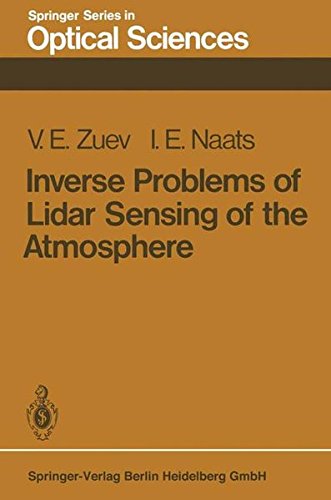

 |

|

Sold Out
Book Categories |
This monograph undertakes to present systematically the methods for solving inverse problems of lidar sensing of the atmosphere, with emphasis on lidar techniques that are based on the use of light scattering by aerosols. The theory of multi-frequency lidar sensing, as a new method for studying the microphysical and optical characteristics of aerosol formations, is also pre sented in detail. The possibilities of this theory are illustrated by the experimental results on microstructure analysis of tropospheric and low stratospheric aerosols obtained with ground-based two- and three-frequency lidars. The lidar facilities used in these experimental studies were construc ted at the Institute of Atmospheric Optics S8 USSR Academy of Sciences. Some aspects of remote control of dispersed air pollution using lidar systems are also considered. A rigorous theory for inverting the data of polarization lidar measure ments is discussed, along with its application to remote measurement of the complex index of refraction of aerosol substances and the microstructure pa rameters of background aerosols using double-ended lidar schemes. Solutions to such important problems as the separation of contributions due to Rayleigh molecular and Mie-aerosol light scattering into the total backscatter are ob tained by using this theory. Lidar polarization measurements are shown to be useful in this case. The efficiency of the methods suggested here for inter preting the lidar polarization measurements is illustrated by experimental results on the investigation of the microphysical parameters of natural aero sols and artificial smokes using polarization nephelometers."
Login|Complaints|Blog|Games|Digital Media|Souls|Obituary|Contact Us|FAQ
CAN'T FIND WHAT YOU'RE LOOKING FOR? CLICK HERE!!! X
 You must be logged in to add to WishlistX
 This item is in your Wish ListX
 This item is in your CollectionInverse problems of lidar sensing of the atmosphere
X
 This Item is in Your InventoryInverse problems of lidar sensing of the atmosphere
X
 You must be logged in to review the productsX
 X
 X

Add Inverse problems of lidar sensing of the atmosphere, , Inverse problems of lidar sensing of the atmosphere to the inventory that you are selling on WonderClubX
 X

Add Inverse problems of lidar sensing of the atmosphere, , Inverse problems of lidar sensing of the atmosphere to your collection on WonderClub |